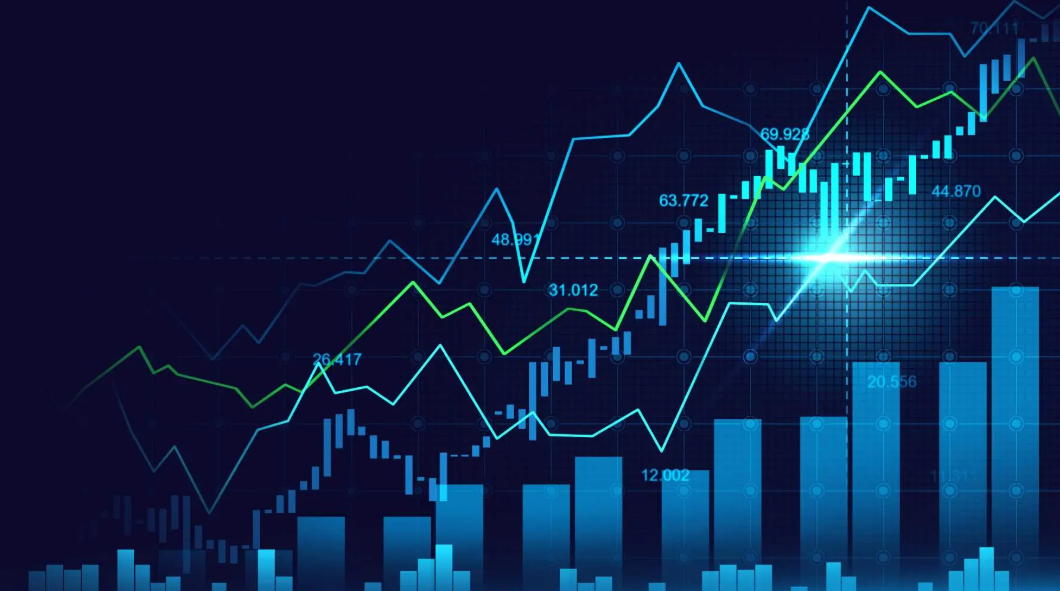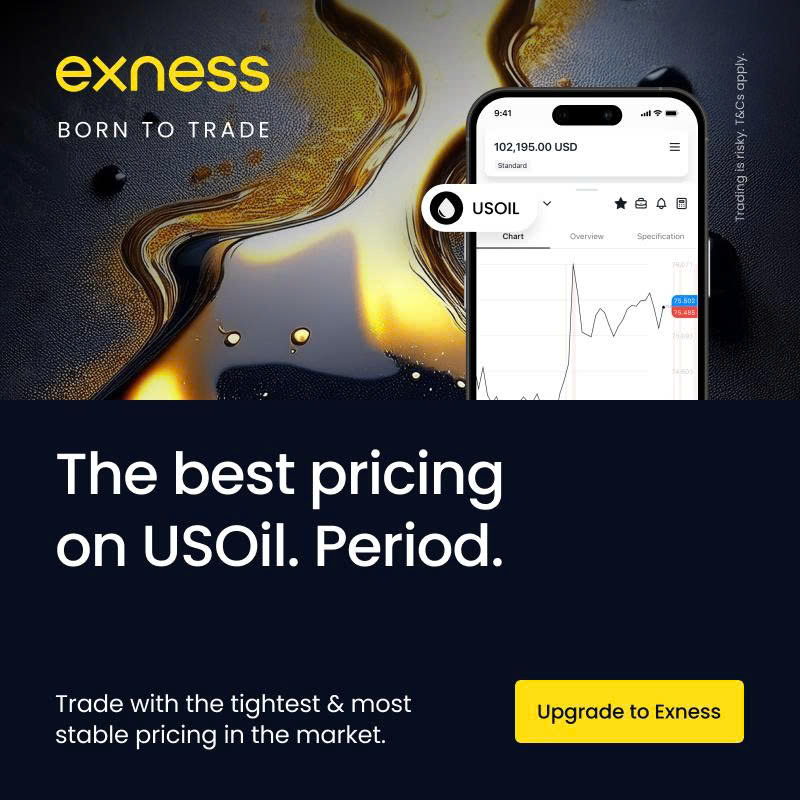
7 minute read
How to Start Forex Trading in Philippines: Beginner's Guide 2025
from Exness
by Exness Blog
If you're from the Philippines and wondering how to start forex trading, the answer is simple: you can begin today with just a smartphone, internet connection, and a verified forex account. Forex trading is legal in the Philippines, and anyone can access global currency markets through online brokers. You don’t need to be a finance expert to get started—what you do need is the right information, a reliable broker, and the discipline to learn and practice.
Top 4 Best Forex Brokers in Philippines
1️⃣ Exness: Open An Account or Visit Brokers 🏆
2️⃣ XM: Open An Account or Visit Brokers 💥
3️⃣ JustMarkets: Open An Account or Visit Brokers ✅
4️⃣ Quotex: Open An Account or Visit Brokers 🌐
Let’s break down exactly how to start forex trading in the Philippines step-by-step, without wasting your time on vague theories.
1. Is Forex Trading Legal in the Philippines?
Yes, forex trading is legal in the Philippines. However, it's important to note that forex brokers are not locally regulated by the Securities and Exchange Commission (SEC) of the Philippines. That means you will be using offshore brokers that accept Filipino traders. This is perfectly normal and widely practiced, but you should only use reputable brokers that are regulated in trusted jurisdictions like Cyprus, Australia, or the UK.
2. What Do You Need to Start Forex Trading?
You don’t need a finance degree or a huge capital to begin forex trading. Here's what you need:
· Smartphone or computer
· Stable internet connection
· Valid government ID (for account verification)
· Email and phone number
· A broker account
· Trading platform (MT4/MT5 or broker’s app)
· Capital to fund your account (as low as $10)
You can open an account and start trading in less than 15 minutes if you already have your documents ready.
3. Choose the Right Forex Broker
Your broker is your gateway to the forex market. If you choose the wrong one, you risk getting scammed or dealing with high fees and poor execution. For Filipino traders, the best option is to go with globally trusted brokers that accept clients from the Philippines and offer:
· Low spreads and commissions
· Fast deposits and withdrawals via local banks or e-wallets
· 24/7 customer support
· Regulated by financial authorities (CySEC, FCA, ASIC, etc.)
· User-friendly mobile apps
Some brokers that are popular among Filipino traders include Exness, FBS, XM, and Octa. These brokers offer cent accounts, demo accounts, and low minimum deposits—perfect for beginners.
4. Open and Verify Your Trading Account
Once you’ve selected a broker, the next step is to create your account. The process usually goes like this:
1. Fill in your personal details (name, email, country, etc.)
2. Upload your government-issued ID (Passport, Driver’s License, or National ID)
3. Provide proof of address (utility bill, bank statement, etc.)
4. Wait for account approval (usually takes a few hours)
5. Choose your trading account type (Standard, Cent, Zero Spread, etc.)
Make sure all your documents are clear and match your registration details to avoid delays.

✅ Trade with Exness now: Open An Account or Visit Brokers 👈
5. Fund Your Account in Philippine Pesos
Most international brokers allow deposits in PHP via local bank transfers, GCash, or online wallets. This is very convenient and fast.
Some brokers automatically convert your deposit into USD or EUR (the base currencies in forex), while others let you choose PHP as your wallet currency. Choose the one that offers the lowest conversion and transaction fees.
Start small. You don’t need to deposit a lot to begin. Even $10–$50 is enough to start testing your strategies on a live account.
6. Download a Trading Platform
After funding your account, you need to install a trading platform. Most brokers support MetaTrader 4 (MT4) or MetaTrader 5 (MT5)—the industry standard for forex trading.
If you’re a beginner, start with the mobile app version or the broker’s proprietary app. These platforms show real-time prices, let you place buy/sell orders, and manage your risk using stop-loss and take-profit tools.
Learn how to read candlestick charts, use indicators like RSI or Moving Average, and understand key forex terms (like pips, leverage, margin, and spread).
7. Learn Forex Basics Before You Trade
Jumping into real-money trading without knowing the basics is the fastest way to lose your investment. Spend at least a few days (or weeks) learning the following:
· What is leverage and margin?
· What are currency pairs (like EUR/USD, USD/JPY)?
· What affects exchange rates?
· How to read a forex chart?
· What are support and resistance levels?
· What is a stop-loss and why is it important?
Use your broker’s free educational content, YouTube tutorials, and demo accounts to practice. A demo account allows you to trade with virtual money so you can understand the platform and build your strategy without risking real funds.
8. Start Small and Trade Safely
When you’re ready to trade with real money, start with the smallest position sizes possible. Many brokers offer cent accounts, where your $10 deposit becomes 1,000 cents, and trades are executed in micro-lots. This is great for beginners to learn with minimal risk.
Don’t use high leverage as a beginner. Even though brokers may offer 1:1000 or 1:2000 leverage, it’s safer to use 1:50 or 1:100 until you gain experience. Always set a stop-loss on every trade and never risk more than 1–2% of your account on a single position.
9. Track Your Progress and Improve
Forex trading is a skill, and like any skill, it requires practice and reflection. After every trade or every trading week, review your results:
· What worked?
· What went wrong?
· Did you follow your plan?
· Were you emotional or disciplined?
Keep a trading journal to track your progress. Learn from your mistakes and refine your strategies over time. Don’t expect to get rich overnight—real traders build wealth slowly and steadily by mastering the basics and controlling risk.
10. Pay Attention to Taxes and Withdrawals
While forex profits are not automatically taxed in the Philippines, it is your responsibility to report earnings to the Bureau of Internal Revenue (BIR). Keep records of your withdrawals and earnings.
When withdrawing profits, choose brokers that offer local transfer methods. This ensures faster, lower-fee withdrawals straight to your bank account or e-wallet. Some brokers even allow same-day withdrawals to GCash or local banks like BDO and BPI.
Final Tips for Forex Traders in the Philippines
· Don’t trade based on emotion or greed. Always follow a plan.
· Avoid signal groups and “get rich quick” forex scams on social media.
· Stick with regulated brokers and avoid sending money to individuals.
· Focus on building knowledge and discipline before increasing your capital.
· Join online communities (like forex Facebook groups or Reddit forums) to stay updated and learn from others.
✅ Trade with Exness now: Open An Account or Visit Brokers 👈
Conclusion
Starting forex trading in the Philippines is simple, legal, and accessible—even if you have a small budget. The real challenge lies not in opening a trading account but in mastering the psychology, discipline, and knowledge needed to trade profitably. Begin by choosing a reputable broker, learning the basics, practicing with a demo account, and gradually moving into real trading with small capital.
If you treat forex as a long-term skill to be developed, rather than a quick way to make money, you’ll be ahead of 90% of new traders. The forex market rewards patience, discipline, and consistency—and that journey can start right now, even from the Philippines.
Read more:










